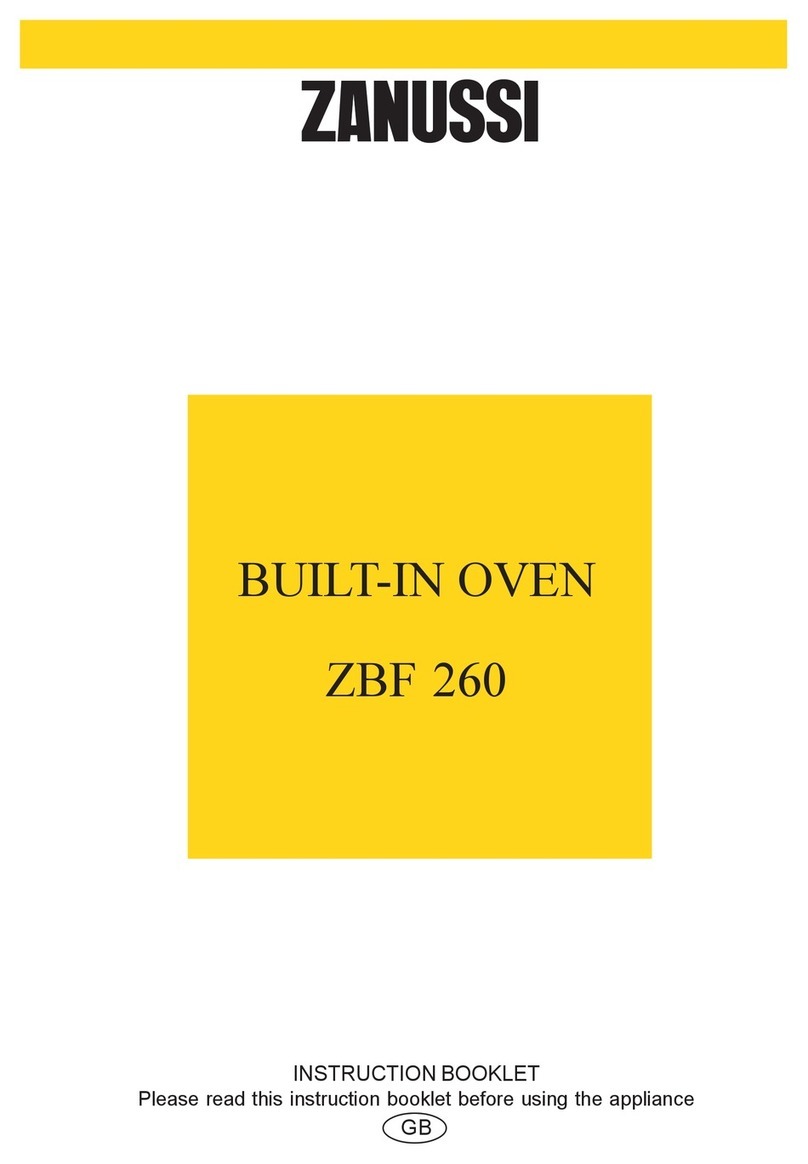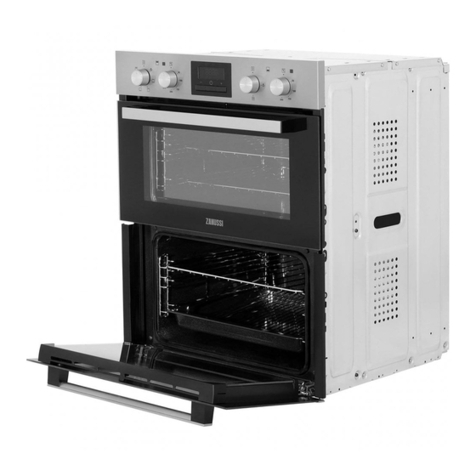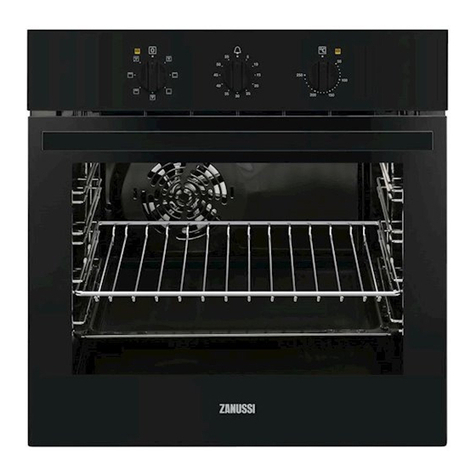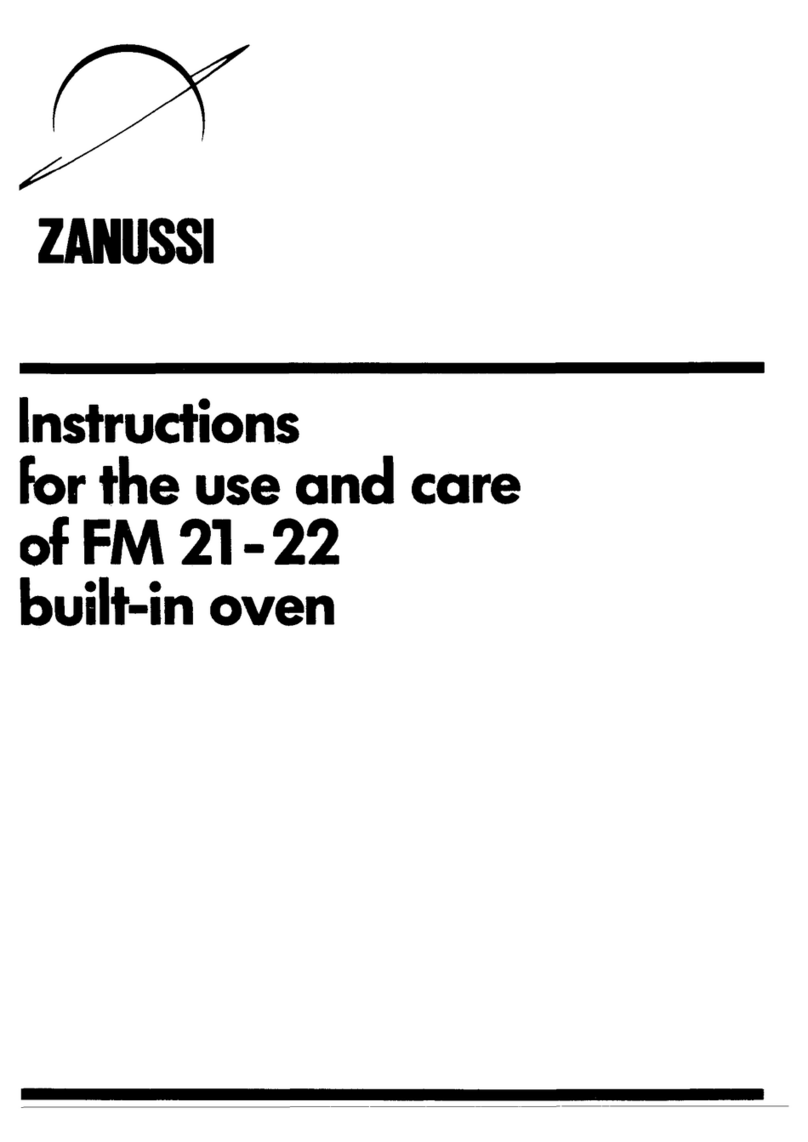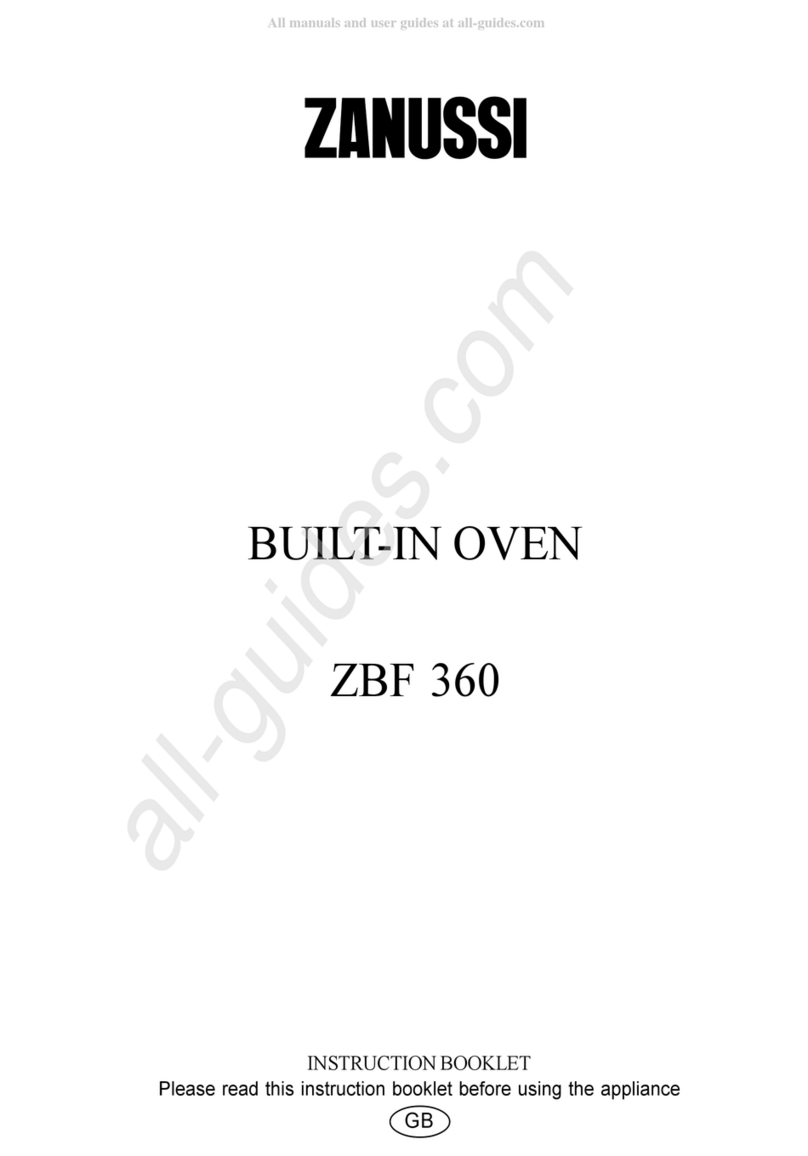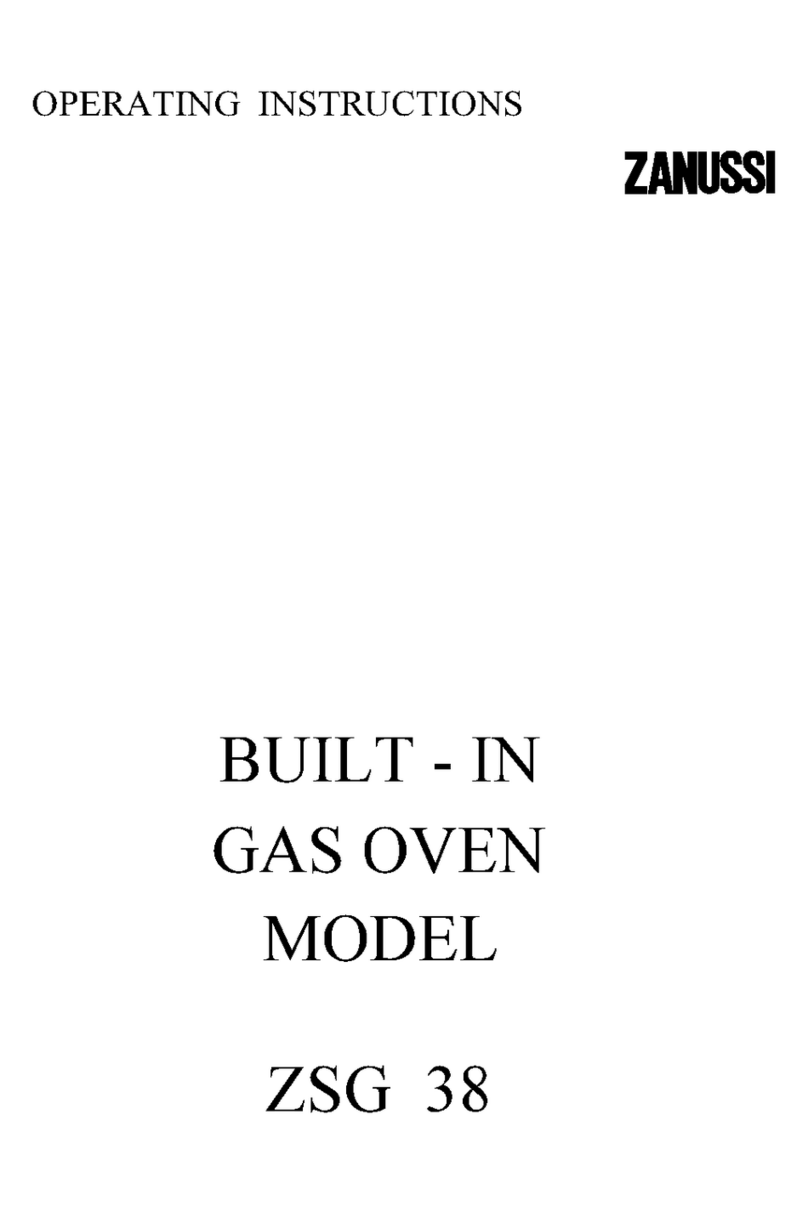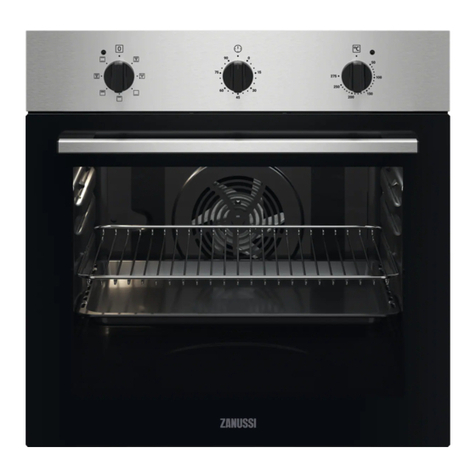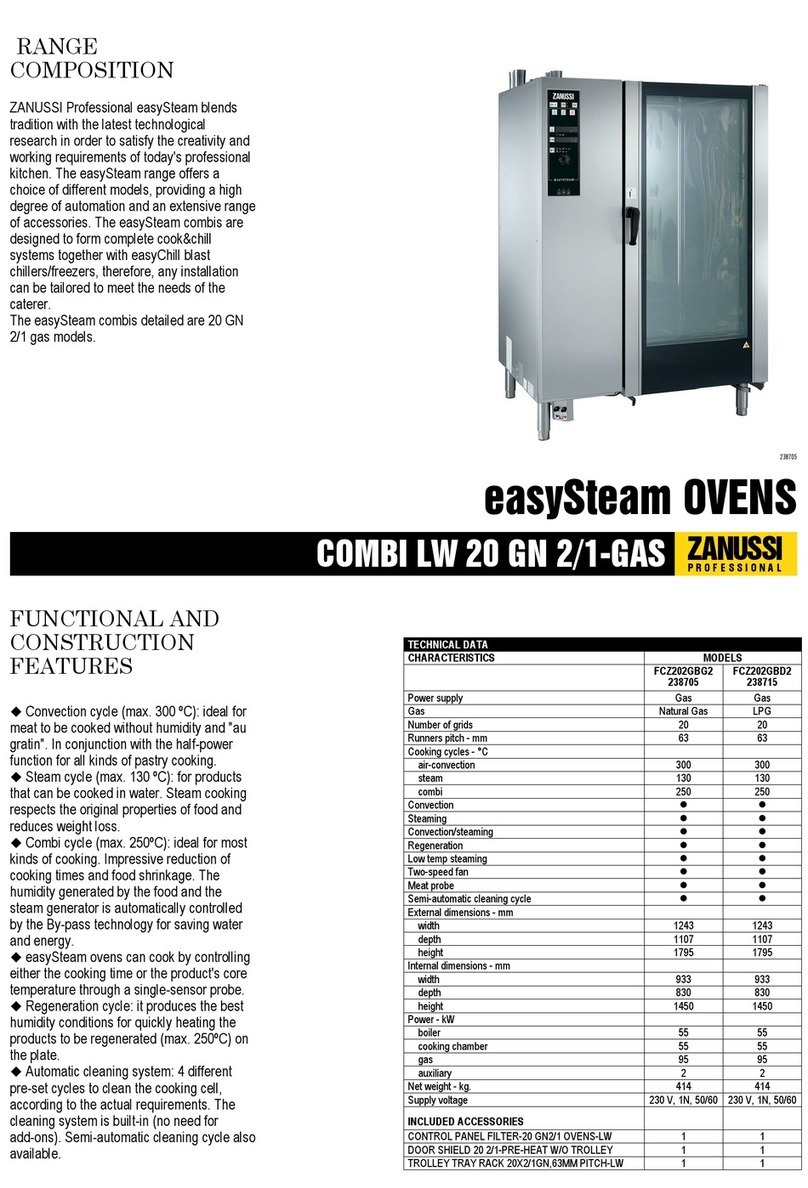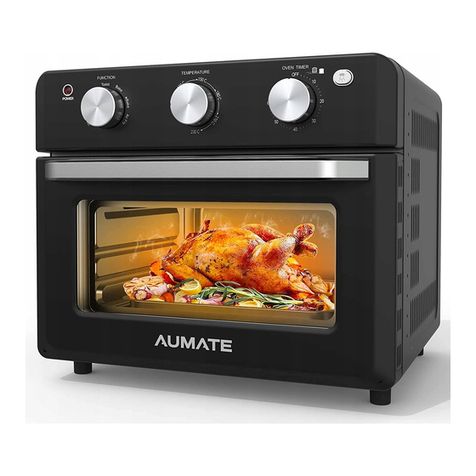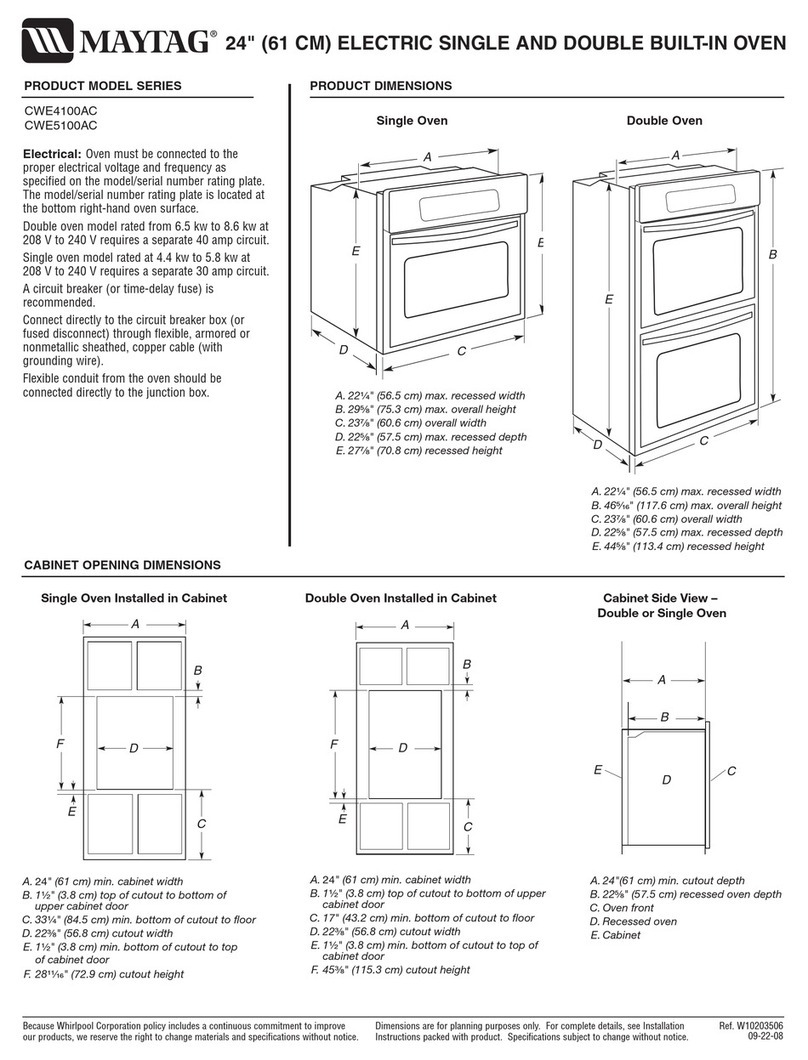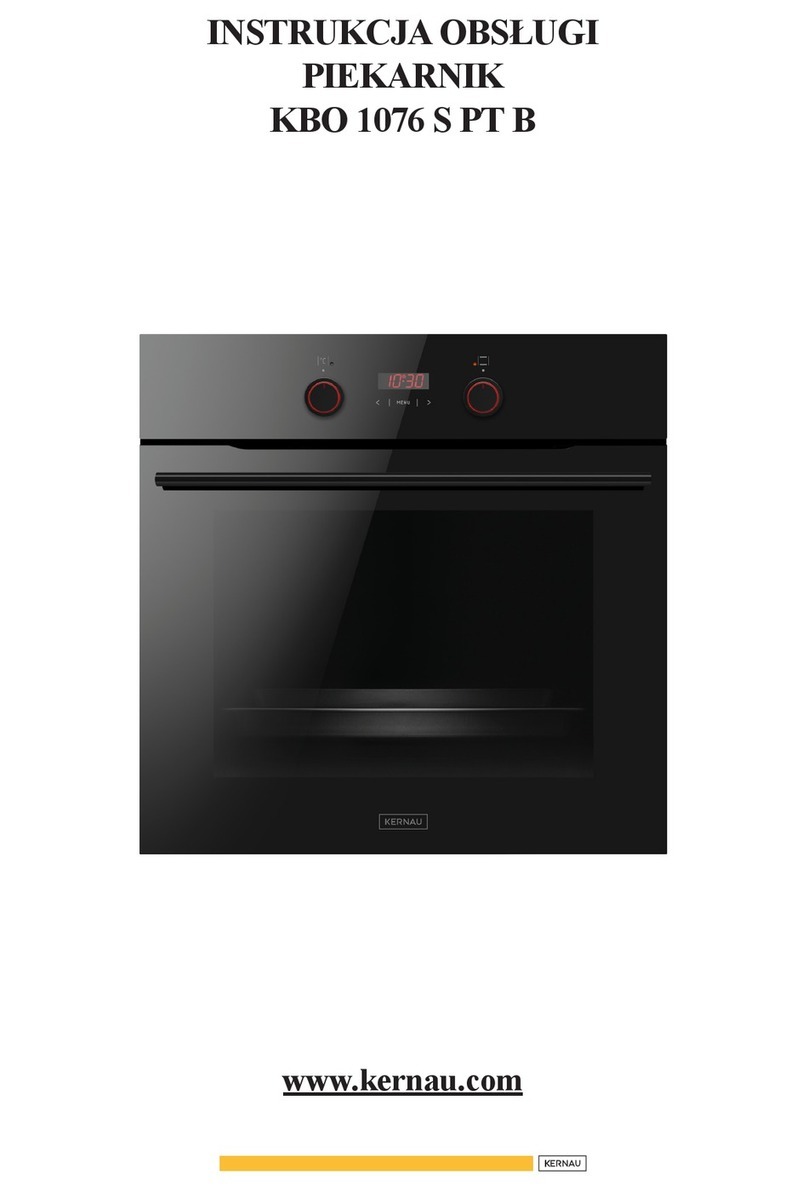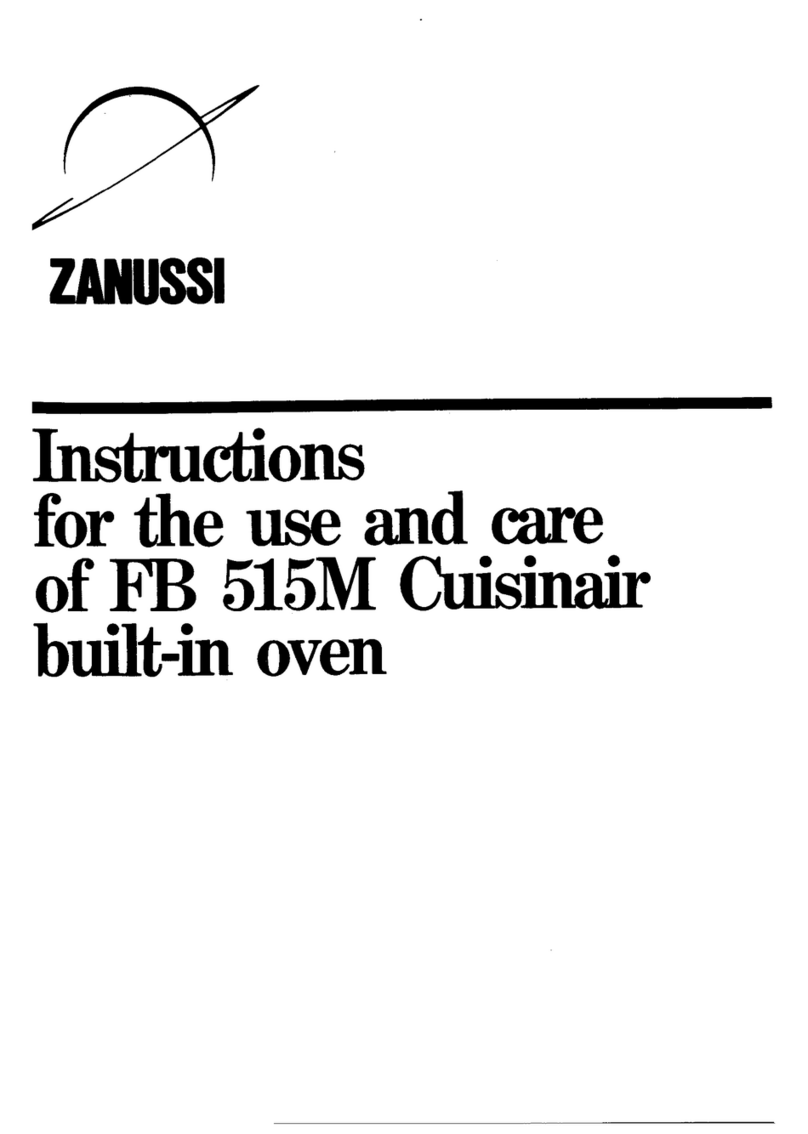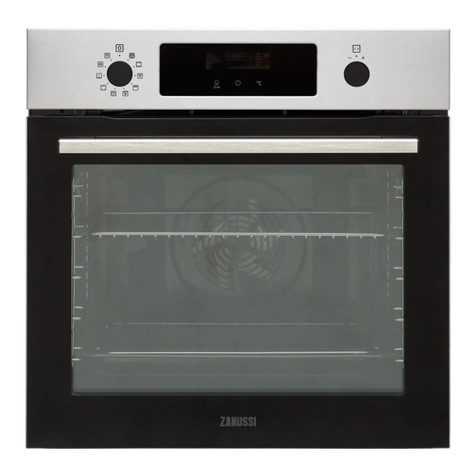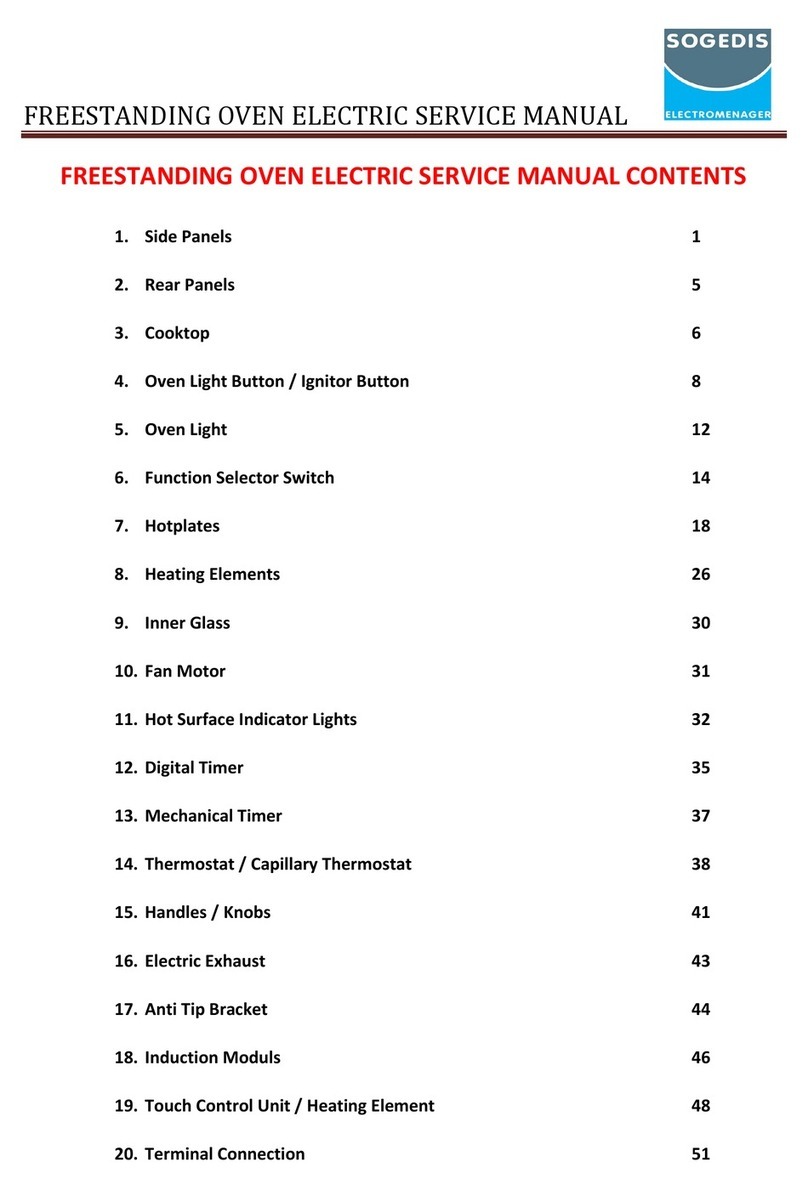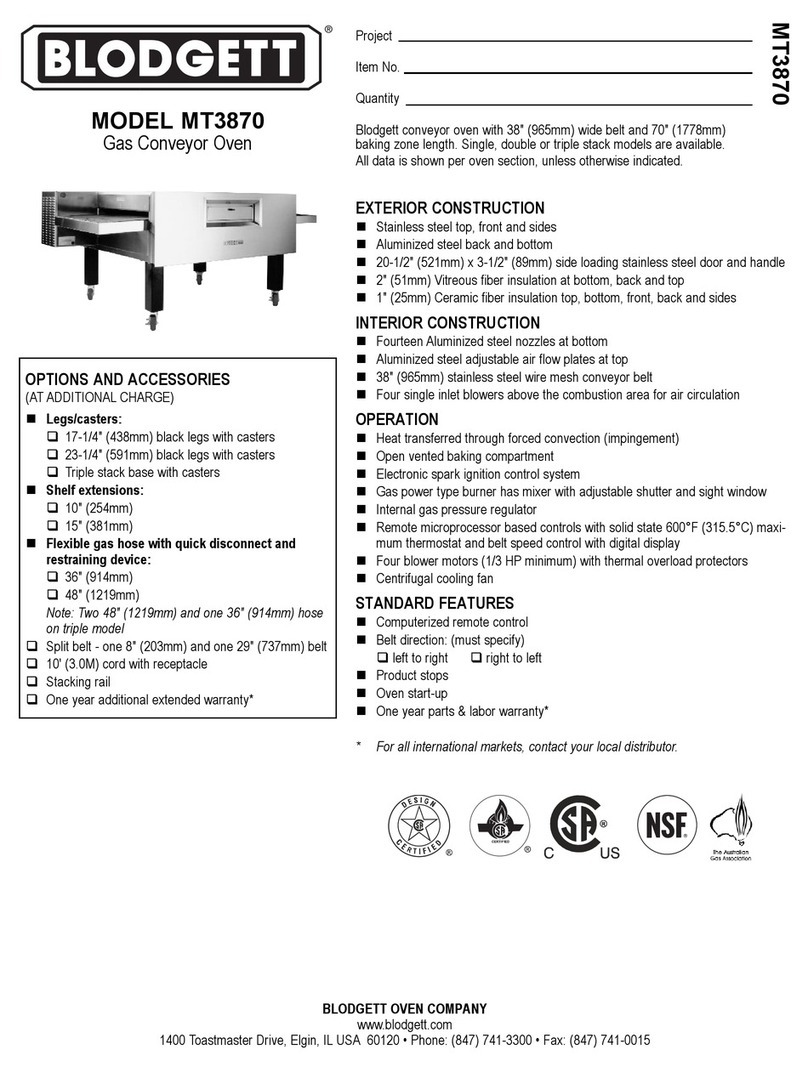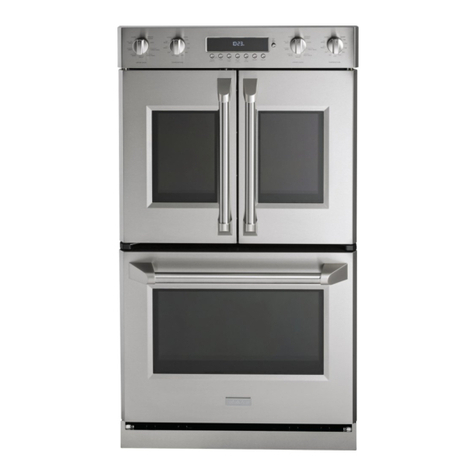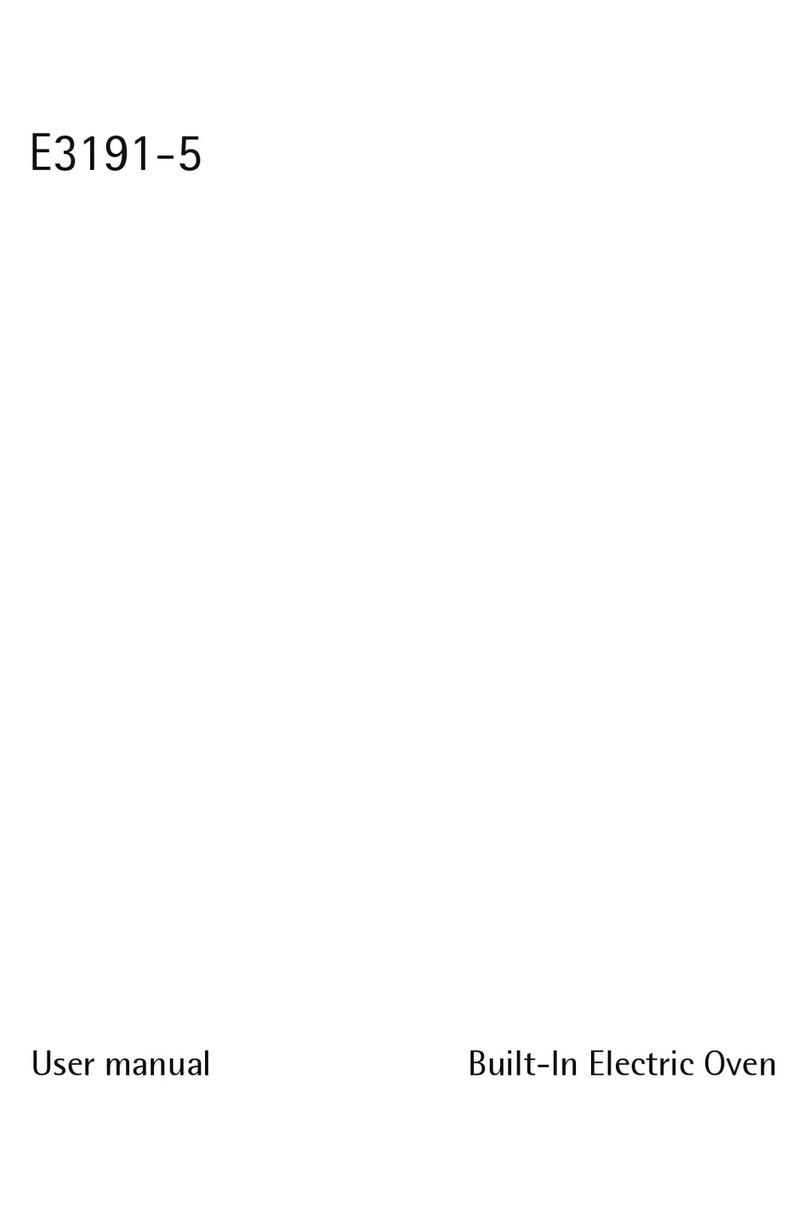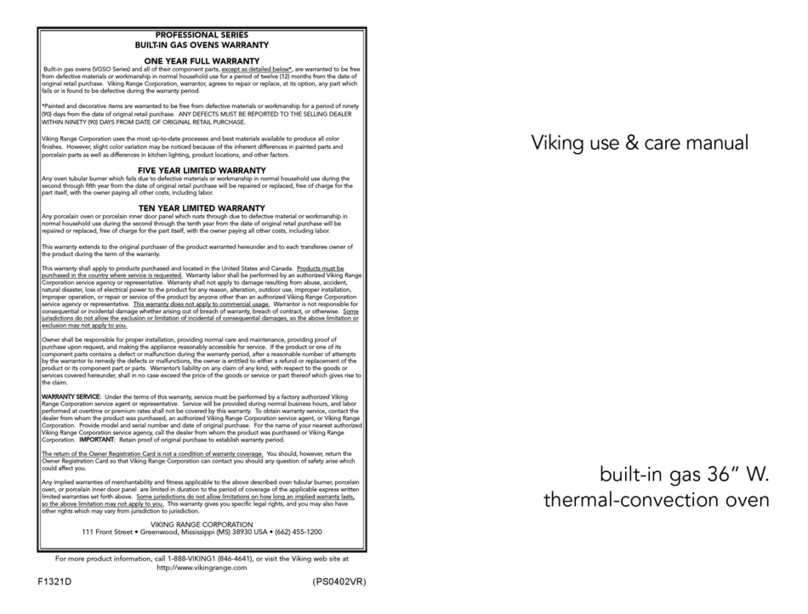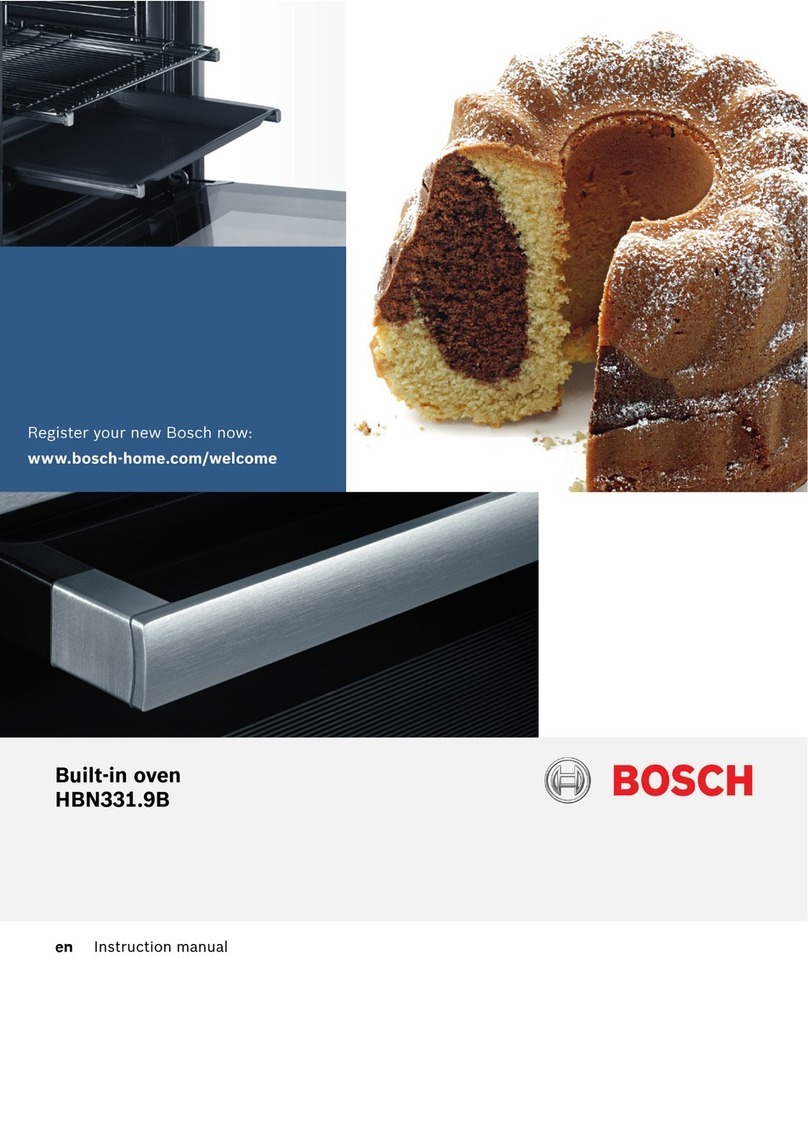10
Oven Cavity
The enamelled oven cavity is best cleaned whilst the oven
is still warm.
Wipe the oven over with a soft cloth soaked in warm soapy
water after each use. From time to time it will be
necessary to do a more thorough cleaning, using a
proprietary oven cleaner.
If the soilage has become set, after the oven has cooled
down, the following process will help to soften the splatters
to help make cleaning easier.
1. Place the grill/ meat pan on the oven shelf positioned
in the lowest runner.
2. Add a few drops of wasing-up liquid to the pan and fill
to about 12 mm. with boiling water from the kettle.
3. Close the oven door, turn the oven function knob on fan
oven and set the thermostat knob on 50°C.
4. After 15 minutes, turn off the thermostat and allow the
fan oven to continue without heat for a further 5
minutes, when the temperature of the water will have
cooled down.
5. Carefully remove the pan of water from the oven and
use normal oven cleaners to clean away soil residues.
6. Leave a little of the soapy water to soak into any
burned on spillage on the floor of the oven for a longer
time if necessary.
Before cleaning always allow the cooling fan to
cool the oven down before switching off at the
electricity supply.
The oven should be kept clean at all times. A build-up of
fats or other foodstuffs could result in a fire, especially in
the grill pan.
Cleaning materials
Before using any cleaning materials on your oven, check
that they are suitable and that their use is recommended
by the manufacturer.
Cleaners that contain bleach should OT be used as
they may dull the surface finishes. Harsh abrasives
should also be avoided.
External cleaning
Regularly wipe over the control panel, oven door and door
seal using a soft cloth well wrung out in warm water to
which a little liquid detergent has been added.
To prevent damaging or weakening the door glass
panels avoid the use of the following:
Household detergent and bleaches
Impregnated pads unsuitable for non-stick
saucepans
Chemical oven pads or aerosols
Rust removers
Bath/Sink stain removers
Clean the outer and inner door glass using warm soapy
water. Should the inner door glass become heavily soiled
it is recommended that a proper cleaning product is used.
Do not use paint scrapers to remove soilage.
DO OT clean the oven door while the glass
panels are warm. If this precaution is not observed
the glass panel may shatter.
If the door glass panel becomes chipped or has
deep scratches, the glass will be weakened and
must be replaced to prevent the possibility of the
panel shattering. Contact your local Service Centre
who will be pleased to advise further.
Oven Shelves
To clean the oven shelves, soak in warm soapy water and
remove stubborn marks with a well wetted soap
impregnated pad. Rinse well and dry with a soft cloth.
The shelf supports can be removed for easy cleaning (see
diagram). Please, ensure the retaining nuts are secure
when refitting the shelf support.
Cleaning the Oven
Replacing the Oven Light
If the oven bulb needs replacing, it must comply with the
following specifications:
- Electric power: 25 W,
- Electric rate: 230 V (50 Hz),
- Resistant to temperatures of 300°C,
- Connection type: E 14.
These bulbs are available from your local Service Centre.
To replace the faulty bulb:
1. Ensure the oven is isolated from the electrical supply.
2. Turn the glass cover anticlockwise.
3. Remove the faulty bulb and replace with the new one.
4. Refit the glass cover.
5. Restore the electrical supply.
FO 0287



